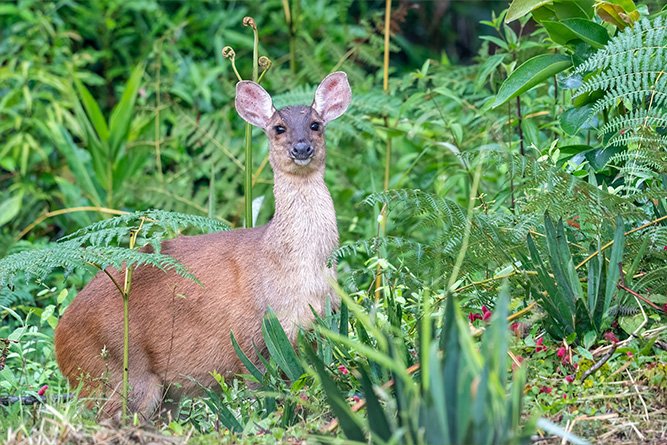The Central American Red Brocket is a deer species that beckons with its enigmatic charm. These forest dwellers hold a treasure trove of intriguing secrets that await your exploration.
Table of Contents
Species Data
- Class: Mammalia
- Order: Artiodactyla
- Family: Cervidae
- Scientific Name: Mazama temama
- Life Span: 8-12 years
- Height: 50-60 cm (20-24 inches)
- Weight: 25-35 pounds (11-16 kilograms)
Description
The Central American Red Brocket, scientifically known as Mazama temama, is a medium-sized deer species known for its reddish-brown fur and unbranched antlers in males. They have a robust build and are well-adapted to their forested habitats.
Appearance
These deer exhibit a rich reddish-brown coat and are known for their striking appearance. They possess a distinctive white throat patch and a tuft of hair on their heads.
Behavior
Central American Red Brockets are primarily solitary creatures, and their behavior is characterized by their elusive nature. They are known for their agility and swift movements, which help them navigate dense forest environments.
Habitat
These deer are typically found in Central American forests, where they prefer the cover and seclusion provided by the dense vegetation. They are excellent at hiding from predators within their habitat.
Diet and Nutrition
Central American Red Brockets are herbivores and primarily feed on leaves, fruits, and vegetation found in their forested homes. They play a vital role in shaping the plant diversity of their ecosystem.
Mating Habits
These deer do not have a specific mating season and can reproduce throughout the year. Female Central American Red Brockets give birth to a single fawn after a gestation period of approximately 8 months.
Mating Behavior
- Reproduction Season: Year-round
- Pregnancy Duration: Approximately 8 months
- Baby Carrying: Female Central American Red Brockets care for their fawns
- Independent Age: Fawns become independent at around 6-8 months
- Female Name: Doe
- Male Name: Buck
- Baby Name: Fawn
5 Fun Facts for Kids
- The Central American Red Brocket is known for its elusive nature, making it a challenging species to spot in the wild.
- Their reddish-brown coat and distinctive white throat patch make them easily recognizable.
- These deer are primarily active during dawn and dusk, a behavior known as crepuscular.
- Central American Red Brockets are essential for maintaining the balance of their forest ecosystem through seed dispersal.
- Despite their medium size, they are remarkably agile and can navigate dense forests with ease.


